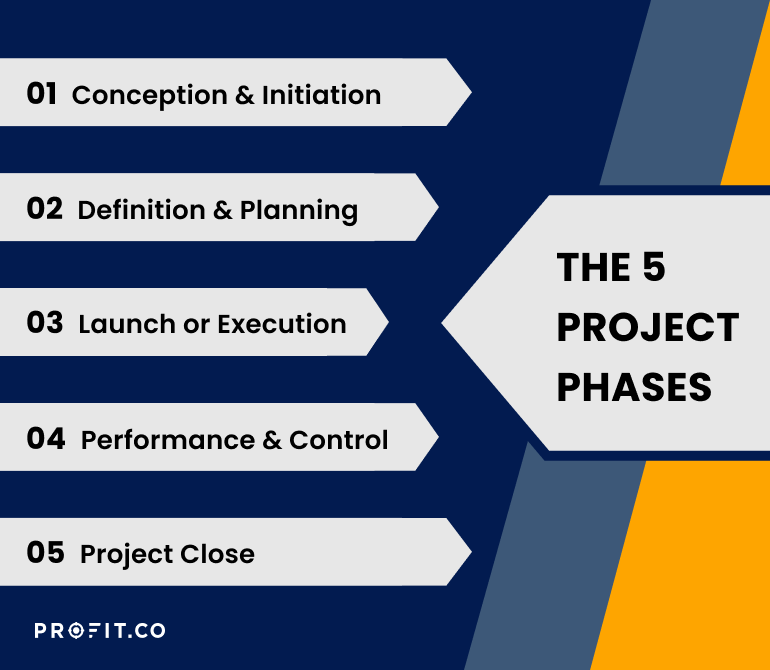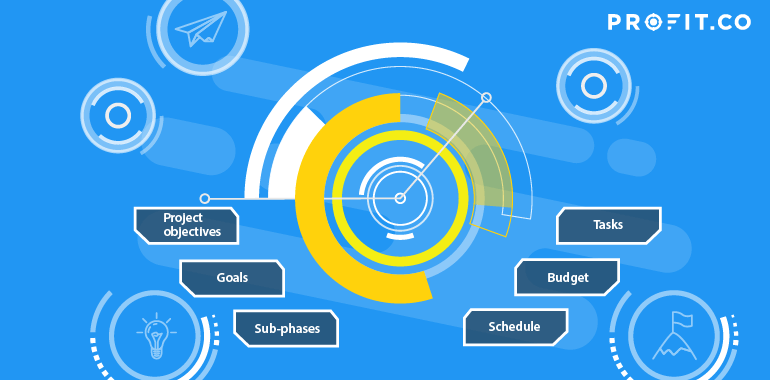Every project manager hopes to deliver all the project requirements on time. But sometimes, things do not go as planned, necessitating the need for project scope management.
What Is The Project Scope?
The project scope defines and outlines the essential aspects of a project. This information includes the project stakeholders, deliverables, processes, requirements, and constraints.
Deciding what not to do is as important as deciding what to do.
Defining the Project Scope
1. Define the project objectives
The project objectives are the specific things you hope your project will achieve. For instance one project objective could be to reduce employee workload by 25%. Your project objectives should be measurable, time-bound, and attainable. These should be defined first in your project planning phase.
2. Goals
The project goals are the broadest, long-term achievable outcomes of the project. Plans can be intangible and non-measurable, and function more as guidance for a project. To continue with our previous example, you can fulfill the purpose of improving employee satisfaction by 25%.
3. Sub-phases
Sub-phases break down the project into smaller manageable steps. Your project could have five phases: initiation, planning, execution, control, and closure. The Project Management Institute outlined the five project management phases as:
1. Conception & Initiation
2. Definition & Planning
3. Launch or Execution
4. Performance & Control
5. Project Close

4. Tasks
Tasks are the specific activities that you carry out in each project phase. Examples of tasks include procuring human resources equipment or developing the user interface. You can use a work breakdown structure to specify and allocate tasks to your project team members.
5. Budget
The budget outlines the cost of implementing the project. All labor, resources, and time should be accounted for on your budget sheet. This is incredibly important so that your company does not stretch limited resources too thin, or so that the customer or client gets an accurate estimate of what a project will cost.
6. Schedule
A project schedule outlines the time constraint of each project task. When working with clients and external stakeholders, it’s especially important to stick to the predetermined schedule as other people may be dependent on the project to go off without a hitch.
The schedule should take into account which employees are working on a certain project phase, how much time that task is expected to take, as well as the number of hours allotted in the budget for each part of the project.
Project Scope Template
A project scope doesn’t need to be complex. A project scope example could be as follows:
- Introduction
- Project Scope
- Project Deliverables
- Project Acceptance
- Project Exclusions
- Project Constraints
Project Scope Management Process
Project scope management ensures that you meet all the requirements in your project scope. The process has three general phases: planning, controlling, and closing. Let’s take a look at these three phases:
Planning
The planning process involves capturing and defining your project objectives. The main goal of this process is for you to understand what you will be doing in the project.
At the end of planning, you should clearly understand the project and define the project scope. The process has four activities:
1. Scope management planning
In this activity, you draft the project scope statement and provide a breakdown of all the project requirements. You will have a reference document at the end of this task.
2. Requirement collection
The next step is to collect the project requirements from stakeholders and their expected users. Ensure that you have the following:
- Functional and non-functional requirements
- Business requirements
- Stakeholder requirements
- Project deliverables
3. Scope definition
The scope definition provides a well-detailed description of your project, and it should define the project boundaries, deliverables, and objectives.
4. WBS creation
The work breakdown structure breaks the project tasks into smaller, manageable activities that you can assign to your team members. You can prioritize tasks based on their importance, and you can also use project management software to create your WBS.
If you’re looking for a flexible software solution that enables you and your team to transparently manage your OKRs, tasks, and strategy, try Profit.co’s OKR Management software free for thirty days!
Controlling
The controlling process documents and tracks the project’s process. Scope controlling has two activities:
1. Scope validation
Scope validation ensures that your project scope and deliverables align with the project goals.
2. Scope control
Scope controls ensure that you always adhere to the project scope. The process involves approving or disapproving changes to the project scope. There are four types of scope creep that might prompt scope changes:
-
The business creeps. Business changes occur when the project’s stakeholders or organizations alter the scope. The creep might also happen when you don’t understand the business environment.
-
The effort creeps. This occurs when you are not making progress on the project. You have to review your project scope, and you can ask for more time or more flexibility in the budget.
-
The hope creep derives from the effort creep. It occurs when you believe you can deliver everything in time. The best way to deal with a hope creep is to be honest with your client and organization, ask for more time or resources, or sit down and review the project scope.
-
The feature creep arises from unclear requirements and the need for perfectionism. You might also cause a feature creep when adding unrequested features to the product. Avoid feature creep by following the project scope to the letter.
Closing
The closing step of project scope management ensures that you have met all the project requirements. This process uses the scope baseline to compare the outcomes to the original scope.
You can break down the three phases of project scope management into specific activities for easier understanding.
Project Scope Statement
The project scope statement is a management document. Often, project managers use the information to compare the original scope with the actual project progress.
The scope statement includes:
- The project goals and objectives. Often, these are the requirements or things the project will address.
- The project statement of work. The report breaks down the project tasks and outlines their allocation to each team member.
- The deliverables that you will obtain from the project tasks. Your final project deliverable should meet all the project requirements.
- The project constraints and exclusions. As a project manager, you need to outline what is acceptable or prohibited and why you deem them so. Limitations might negatively affect your project outcome, including timing, human and financial resources, and procurement challenges.
- The initial project assumptions before execution.
- Acceptance criteria. Quality is more important than quantity. You need to outline how you will measure the success of your project. Outline the standards for an acceptable project outcome.
- The project milestones. Milestones signify important moments in the life cycle of your project.
- The scope baseline. The baseline is your initial scope, and it allows you to compare your actual results against the scope statement.
- The final approval. The customer signs off on the scope statement to confirm that it contains all the project parameters, and the authorization also shows that these parameters are complete and accurate.
Project Scope Checklist
Steve Jobs believed quality is better than quantity. You should ensure that you deliver a quality project. In other words, your project scope should contain every vital detail about the project.
The project scope checklist outlines everything you should include in your project scope, including:
- The project requirements, objectives, outcomes, and deliverables
- The project stakeholders
- In the case of a software project, the key functionalities that you should deliver
- The project’s data and technical requirements
- The deliverable acceptance criteria
- The project’s resources
- The project budget and timeline
- Expected activities and their work breakdown structure
- The project environment: who will the project affect?
Final Thoughts
The scope of a project is something that should be defined and even redefined over the course of a project’s lifetime. It’s important for project managers to be transparent about the scope at different stages of an assignment so that all stakeholders have realistic expectations, and the budget and resources are correctly allocated.
Project transparency can be difficult to achieve in a remote world– however, an agile and intuitive OKR management software can help you achieve this. To learn more about how Profit.co can help your team, book a free demo with our experts today!

